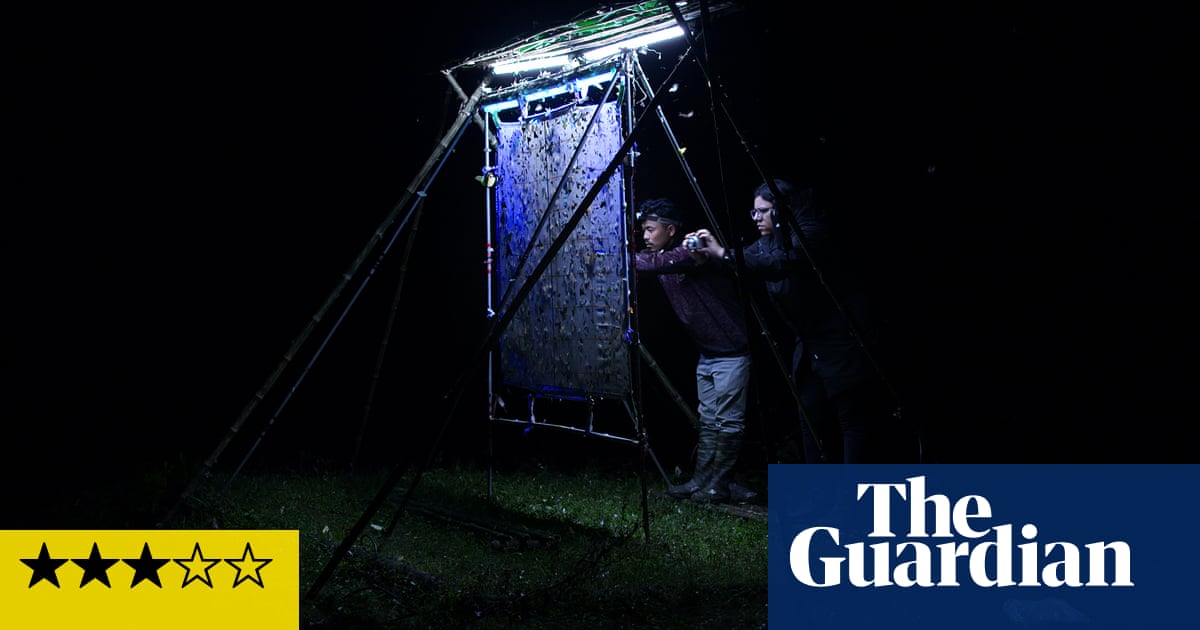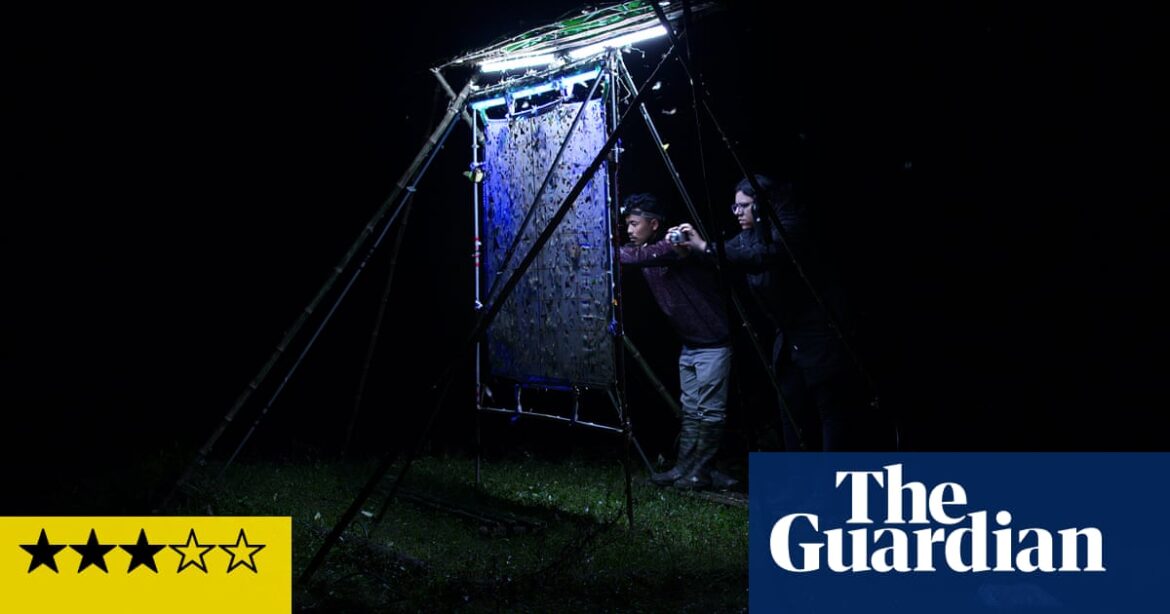
This extremely slow, meditative documentary about a scientist and her assistant studying moths in the eastern Himalayas can only be fully appreciated if it’s watched in a darkened room, preferably a cinema, with no distractions. Otherwise, it’s almost impossible to appreciate its unique relationship to time and action, given that practically nothing happens even though it’s full of teeming, humming, vibrating life. And we’re not just talking about the insects, who we often observe blurring their wings to stay warm as they bask on a sheet lit by moon-mimicking UV light that the scientists have rigged up in the forest to attract the bugs in the first place.
Lepidopterist Mansi Mungee is researching how the rising temperatures of the local ecosystem are affecting hawk moths, a large species with extremely particular tastes when it comes to temperature, humidity, and other environmental factors. She and her assistant Bicki (not himself a scientist although he becomes increasingly fascinated by the process), spend hours each night staring at the screen-UV-light setup, which soon becomes carpeted with thousands of insects, as do the researchers themselves. In long, deep-breath takes, the camera drinks in the dark cool palette of blues, purples, inky greens and powdery browns on the insects and humans alike – hence the title Nocturnes – while the sound unfurls a steady backbeat of birdsong, wind-ruffled leaves, maybe the distant toot of an elephant or two. Sometimes there’s music by Nainita Desai, but it’s a score so minimalist there’s barely a breath between the natural and the human-made soundscapes.
If you’re in the right headspace, the whole thing is quite entrancing. Still, it’s also an extremely rarefied sort of entertainment; sparse and precise like Mungee herself, who keeps trying to get perfect shots of her hawk moths lined up on the grid of the screen so she can measure their lengths and wingspans exactly.
Source: theguardian.com



